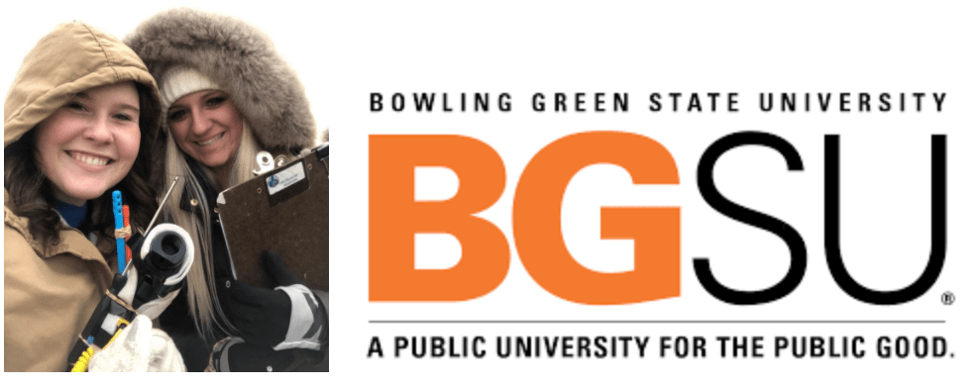By: Allison Cheek of Bowling Green State University, Candidate of Math and Science Education
Research Experience
This past fall, I was an incoming college freshman and I was told I would be participating in a research group. As a scholar of Bowling Green State University’s Science and Math in ACTION Program, I was allowed to participate in a research group. Research is part of our first-year requirements in the program. I thought that was very intimidating, having to conduct research with a team, as well as moving to a college campus and beginning college classes for the first time. Reflecting over this past year, I could not have been more wrong about being a part of a research group! Being on a research team has been an enlightening and satisfying experience.
Illustration: an urban heat island. Image credit: NASA/JPL-Caltech, https://climatekids.nasa.gov/heat-islands/
Research Focus: Urban Heat Island
I joined a research group that focused on finding the hottest and coolest places on Bowling Green State University’s campus. Bowling Green is part of an urban heat island. An urban heat island occurs when the temperature is higher in a city than the surrounding rural areas because there are so many man-made structures in one place, such as asphalt parking lots, buildings, concrete structures, and cars.
Camera Technology
My group and I wanted to find the hottest places on campus and find ways to cool the temperature on campus. We collected data each week at twelve locations throughout campus. Five locations were natural, such as; ponds, grass, and green roofs. Seven locations were man-made, such as roofs and asphalt parking lots. At each location, we recorded the air temperature and surface temperature by using infrared thermometers, as well as FLIR thermal cameras.
FLIR T540 Professional Thermal Camera, photo credit: https://www.flir.com/
Roofing Systems
After collecting data for eight weeks, we concluded that the parking lots and roofs on campus had the hottest temperatures. After extensive research, we found that solutions to lower the temperatures on Bowling Green’s campus are to plant trees and vegetation, as well as implement green roofs and stone roofs.
Green and stone roof systems diagrams, credits: http://www.coninnco.com/building-envelope/dow-building-solutions/inverted-roof-systems, http://godfreyroofing.com/commercial/education/roofing-articles/introduction-to-green-roofing/
Solutions
Using our conclusive solutions, we wrote a Green Fund Grant Proposal to BGSU to implement stone roofs to coat the roof of a dorm with no air conditioning, to cool temperatures.
Graph 1: Natural vs. Man-made Surface Temperature and Air Temperatures created by Allison Cheek and an aerial image of McDonald Hall’s proposed roof site, at Bowling Green State University.
Seek Out Researching Opportunities
Being part of this research team was extremely rewarding for me. We were able to collect data, collaborate ideas, and attempt to implement a solution to cooling BGSU’s campus. I have seen the scientific method come to life with the process of research. Being able to participate in research at a university has been a wonderful experience and I would highly recommend participating in exploration if given the opportunity. This experience has helped me apply my scientific knowledge and make a difference by improving Bowling Green’s campus.
I am grateful to the ACTION Program and to my research advisor, Dr. Jodi Haney, for making this opportunity possible!
Photo: Left Allison Cheek, right Alyson Blunk, research students at BGSU.




